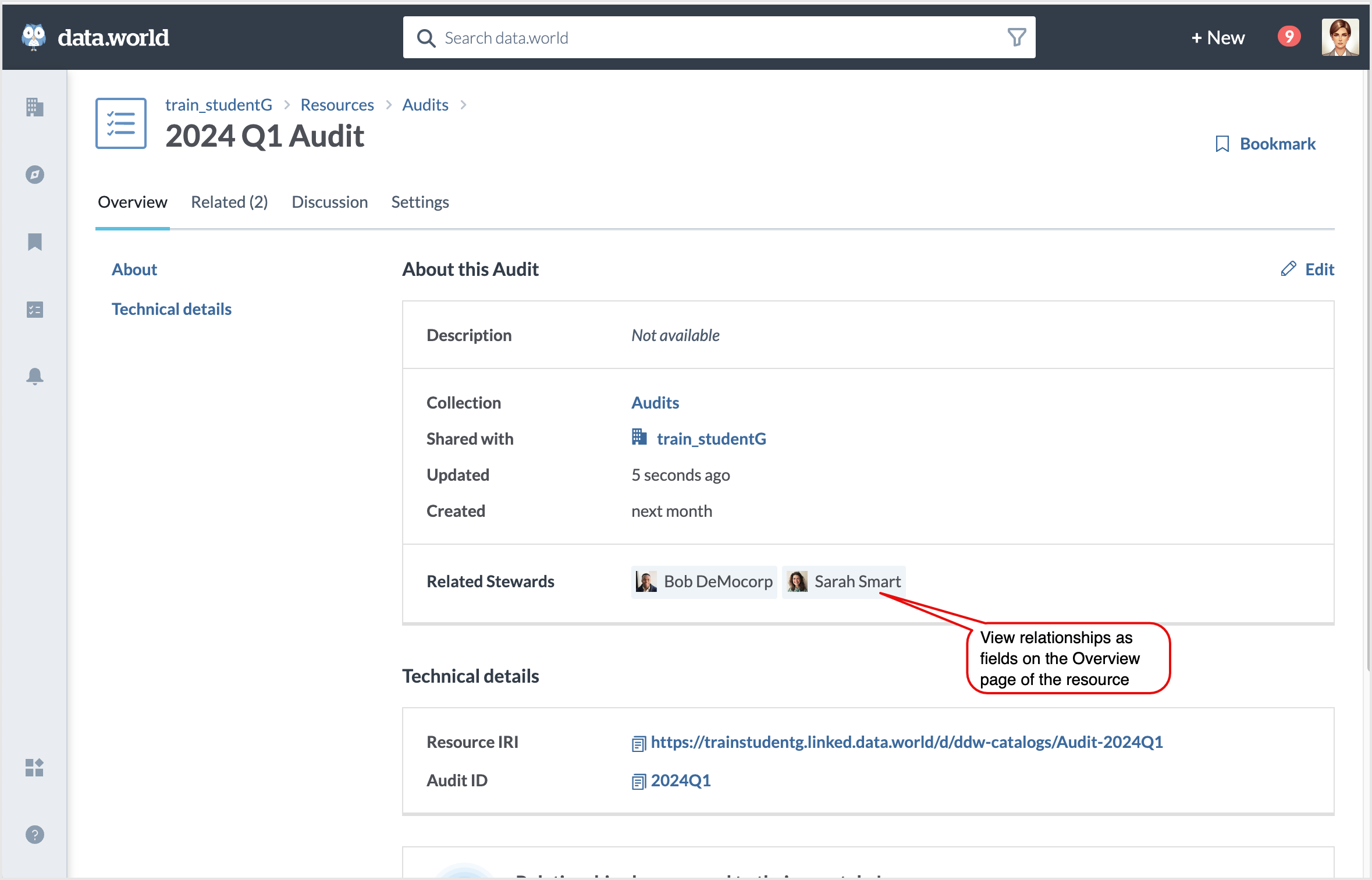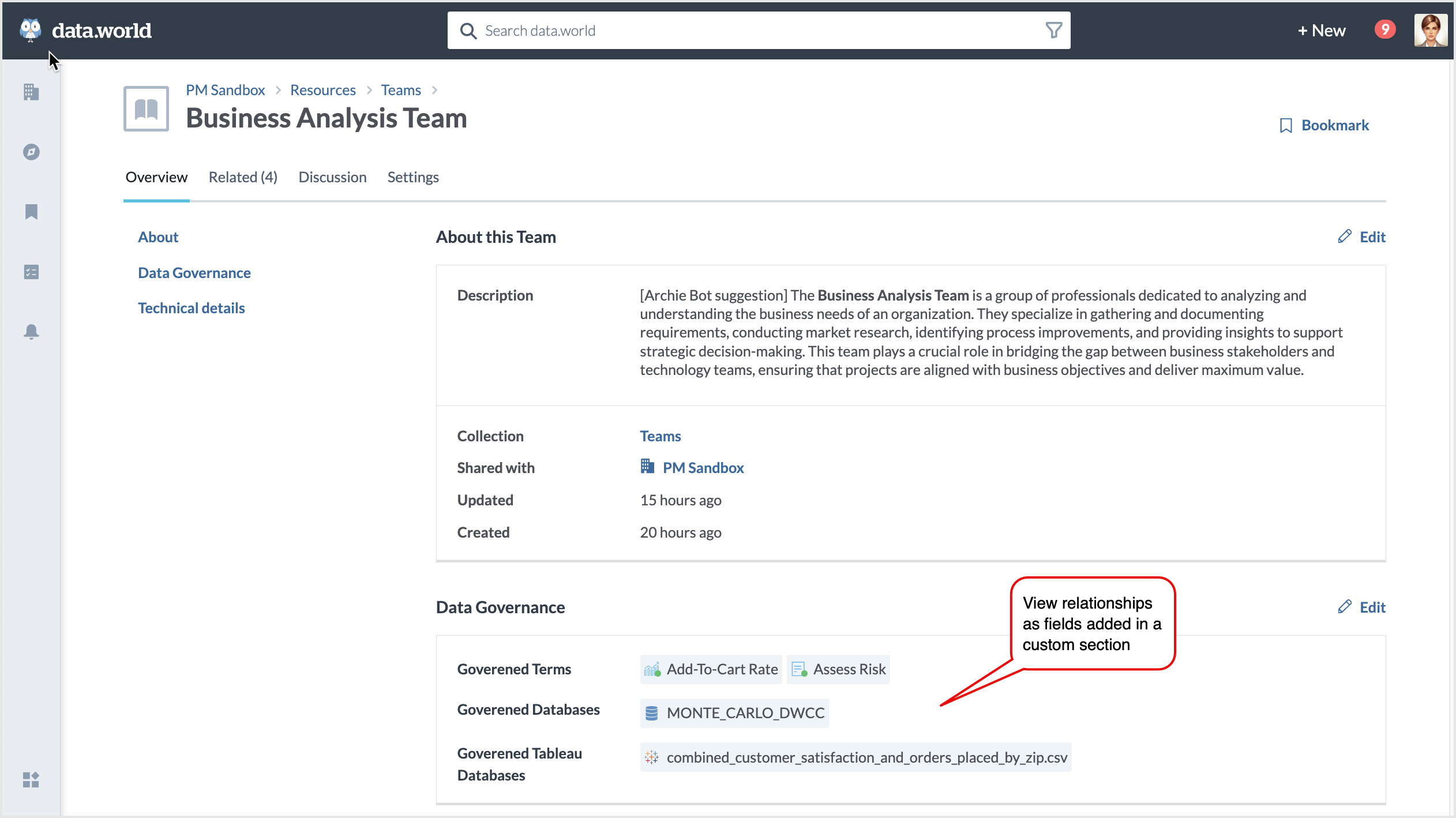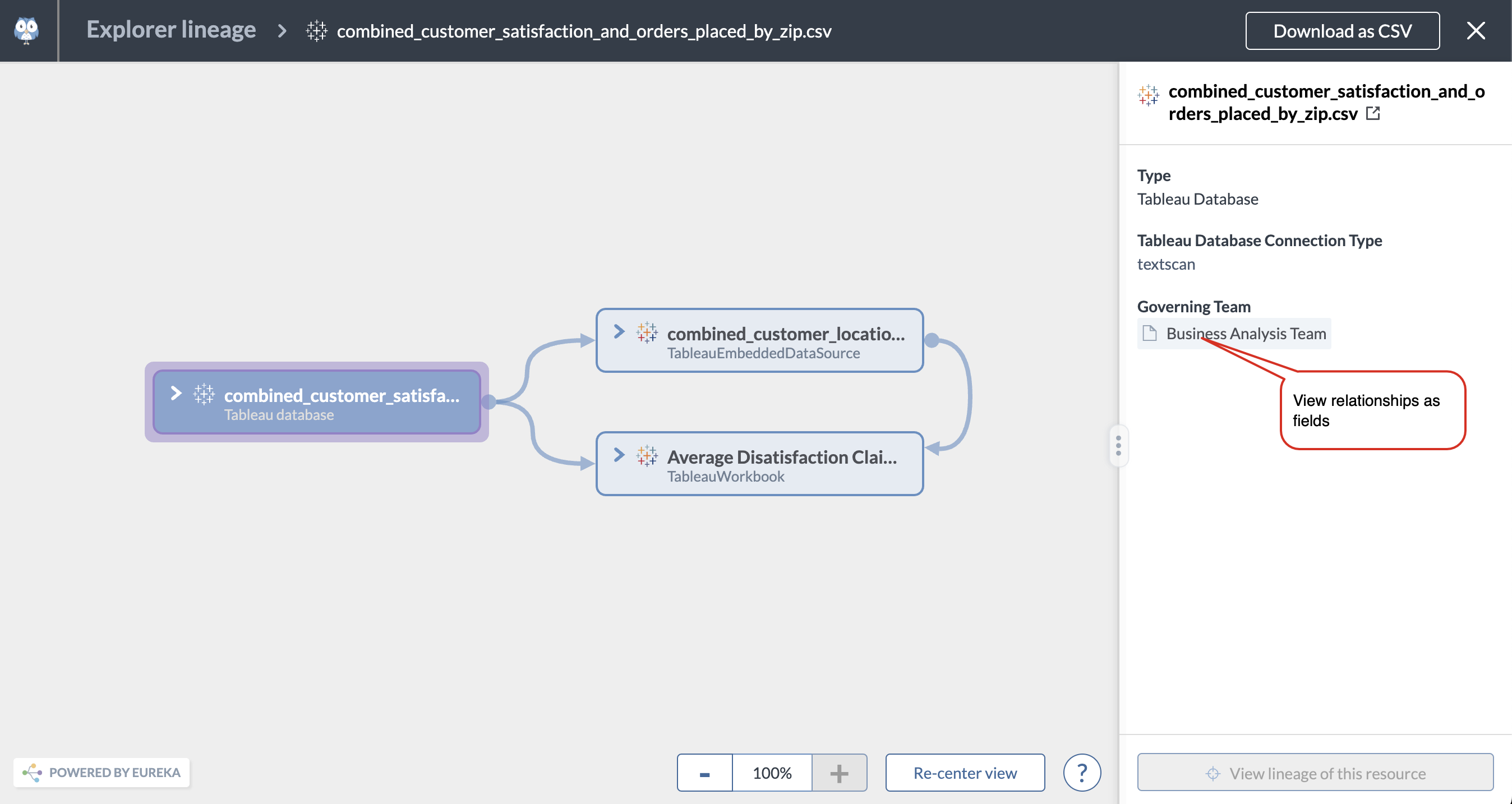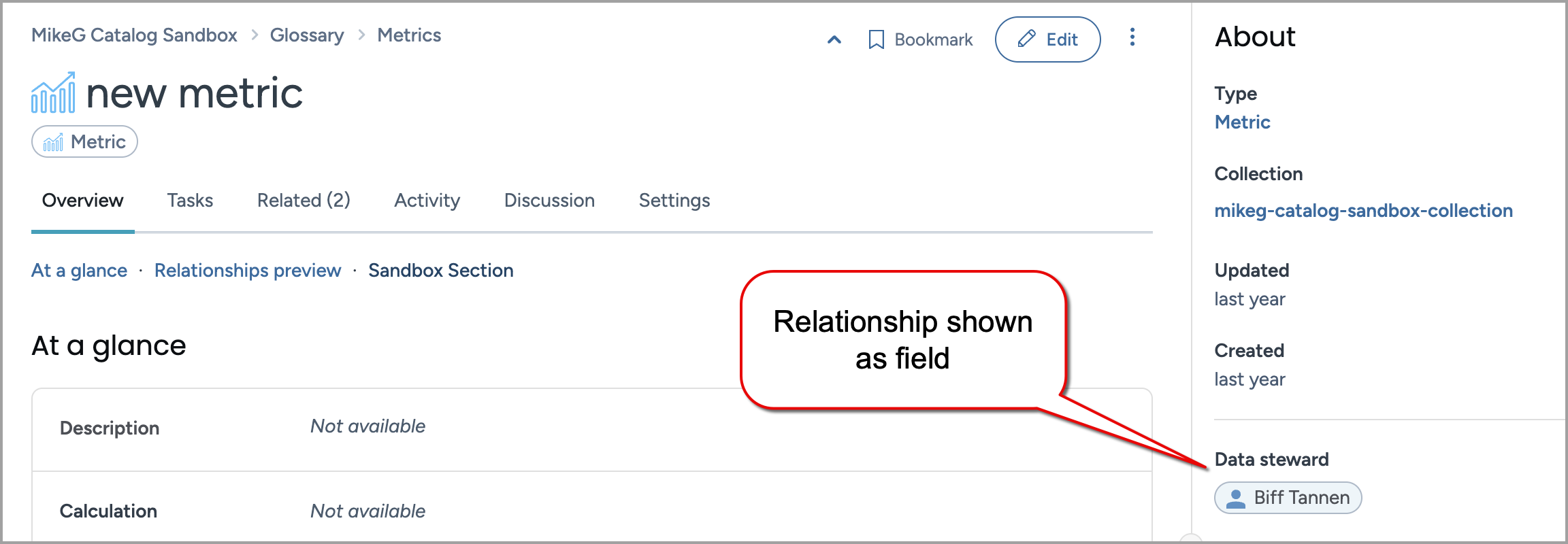Display custom relationships as fields on resource pages (CTK)
Use this feature to highlight the most important custom relationships in your system by displaying them as fields on the Overview page in addition to the Related page. Before setting up relationships as fields, make sure you have already setup and configured the relationships between objects. Note that this feature is not available for out-of-the-box relationships.
Relationships as field added to an out-of-the-box section on a resource page:

Relationships as field added to a custom section on a resource page:

Relationships as field added to Eureka Explorer page:

Why would I do this?
This feature allows data consumers to see and edit the most important related resources for a resource without having to click over to the Related tab.
Use the following guidelines to plan relationships as fields.
Identify the related resource you want to display as a field on the Overview page.
If the relationship is bi-directional, decide if you want to show the relationship as field on both resources.
Identify the title to be used for the relationship field to be displayed on the Overview page. For example, in the example in this article we use the titles, Related Stewards, Related Acronyms.
Identify if you want to show the relationship in a custom section or in one of the out-of-the-box section.
Set up a relationship as a metadata field
In the Catalog experience, go to the Resources page and click the New button.
On the Create a new resource page, in the Select type tab, select Metadata field - related. Click the Continue to configure fields button.
The Create a new Metadata field - related page opens.
In the Configure fields tab, set the following in the About section.
In the Title field, provide a name of the relationship you want to add. This will be the header for the field on the resource page.
From the Collections dropdown, select the Metadata profile collection.
In the Configure fields tab, set the following in the More information section.
Relationship - source types: For relationships where the source types should display the field, select the appropriate relationship. To make this field available as a search filter, enable the Filter by this relationship setting setting on the relationship page.
Relationship - target types: For relationships where the target types should display the field, select the appropriate relationship.
Sections: Define the section in which the field should be displayed. You can add it to any out-of-the-box section or custom section. To add the field to the Eureka Explorer sidebar, set the value as Explorer Sidebar Metadata.
Display order: This setting allows you to determine the display position of the metadata field within a section. By default, it is set to None, which means the fields are sorted alphabetically.
Page visibility: Specify whether the field should be always displayed on the resource page or if should be hidden when it is empty. Default is Always show.
Hover hint: Provide a help text to give context to your users about the field when the cursor is hovererd on field values.
Click Continue to review Metadata field - Related.
In the Review Metadata field - Related tab, check the configuration details for any possible errors before saving it. If adjustments are needed, click Back to edit the configuration.
Click the Create Metadata field - Related button.
Publish the changes
See: Publishing changes.
View the results
The relationship is shown as a field on the resource page, displaying up to five values. If a field has more than five values, you will see a More button. Clicking this button will take you to the Related tab.

You can now easily append more related resources by simply clicking the Edit button on the Overview tab.